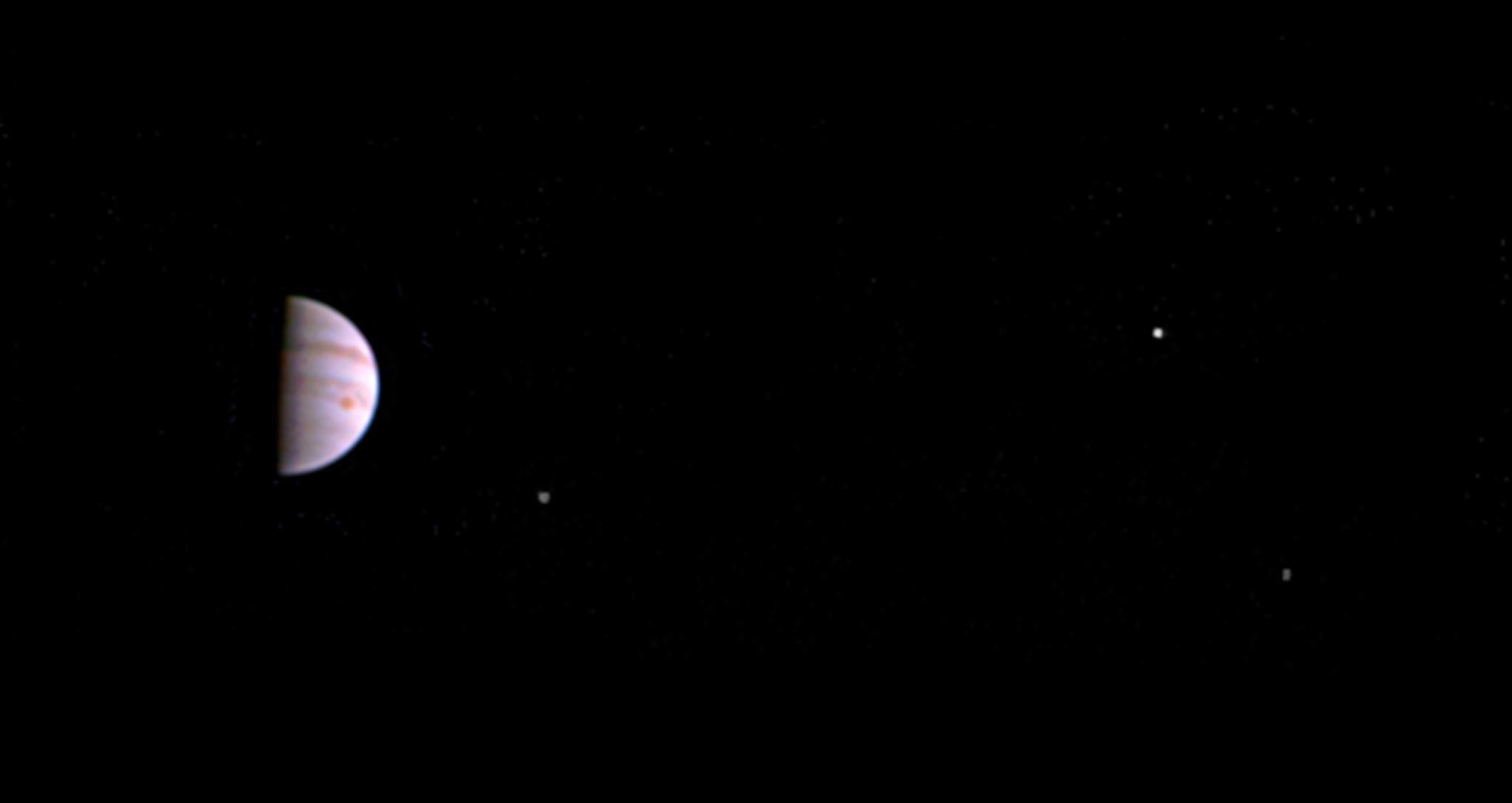Juno sends back stunning first picture of Jupiter after entering orbit
The blurry picture shows a sight never before seen by humanity

The first ever spacecraft to arrive at Jupiter has sent back images from its pioneering journey.
A newly released image shows Jupiter as well as three of its four biggest moons. Though we’ve seen each of those things before – and even have better quality images – it’s the first time that humanity has ever seen the view from the orbit of Jupiter itself.
The picture shows the Great Red Spot of Jupiter – an atmospheric storm that started centuries ago and is one of the most prominent features of Juno’s new neighbour.
The spacecraft went into orbit around Jupiter last week, after a five-year journey to get there. It will spend its 20-month mission getting a full picture of the planet’s poles, atmosphere and interior.
On its way into orbit, Nasa switched off the camera and instruments to protect them from intense radiation. Those instruments have now been switched on, after it arrived last week.
The picture was important because it showed that the camera and instruments on Juno had made it through that tough journey and were ready to get to work, officials said.
“This scene from JunoCam indicates it survived its first pass through Jupiter's extreme radiation environment without any degradation and is ready to take on Jupiter,” said Scott Bolton, principal investigator from the Southwest Research Institute in San Antonio. “We can't wait to see the first view of Jupiter's poles.”
The mission to get Juno to its current home was among the most difficult things Nasa has ever done, officials said, and the work that it will do from now could be among the most important.
Close-ups of Jupiter will be in the next big batch of images set to be sent back to Earth. But they won’t be seen until next month, when Juno swings back around to face the right way.
Join our commenting forum
Join thought-provoking conversations, follow other Independent readers and see their replies
Comments